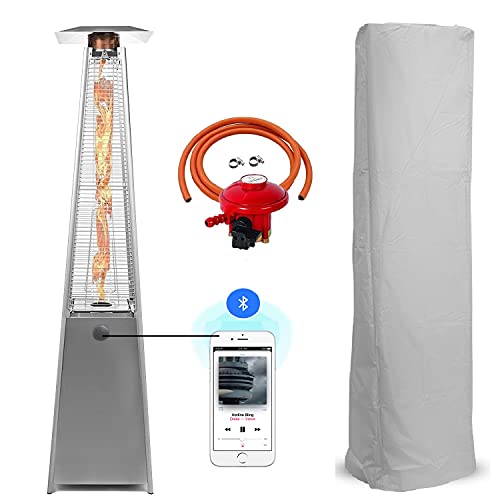Cheap Patio Gas Heaters
Patio heaters are available in many different designs and sizes. Some patio heaters are hardwired and require professional installation. Others use propane or natural gases to heat your space.
Neat, mobile gas cylinders are available in sizes from 5kg green patio bottles all the way to 13kg red propane cylinders. patio outdoor gas heater work with conventional BBQs mobile heaters, mobile barbecues and Ooni pizza ovens.
Cost
The addition of a gas heater for your patio to your business or home will add value and increase the number of people who use your outdoor space. It is a cheaper alternative to other outdoor heaters like wood-burning fire pits or propane heaters. The gas heater for patios can also be used indoors for use to create a cozy atmosphere in the winter.
Costs for gas for patios vary based on the size and model of your appliance. For example, a 5-kg patio gas bottle will cost about PS28. This includes a clip-on regulator** that works with all barbecues and patio heaters. Certain patio heaters might require an additional regulator.
A propane gas cylinder is a great option for pizza ovens and tabletop heaters. It is non-odorous and inexpensive. It is also easy to store and transport. Most propane-powered appliances are sturdy and safe. They last for many years and are a great option for both businesses and homeowners who require savings on heating expenses.
Propane is an environmentally friendly clean-burning fuel that can be used to heat, cooking, and other applications. It is cheaper than electricity and has lower maintenance costs. It is also less affected by price spikes.
Efficiency
The use of gas patio heaters is a reliable method to heat up an outdoor space. They can warm up an area of 215 square feet quickly and efficiently. In contrast to electric heaters, they do not require any installation and can be moved around easily. They can also be switched on or off using remote controls or programmed timers. Some models even feature an automatic shut-off function that can prevent accidental fires.
When it comes to choosing gas types there are two choices available: propane and butane. Both are LPG but they differ in their boiling point as well as speed, with butane being colder than propane. Butane, which is also known as "patio gas" is usually stored in green cylindrical containers. Propane is stored in containers of red. Both kinds of gas work with all standard BBQ and patio heater models and are available at many garden and home stores.
Gas bottles for your patio are available in sizes ranging from 5kg to 13kg. They are designed to fit in your heater or BBQ. Some even have an indicator to inform you when the gas is low. They are compatible with regular BBQ regulators. You can save money by using butane instead of propane. Many appliances can be modified to run using either fuel.
Butane is most efficient in warmer temperatures. It is perfect for BBQs and camping gas stoves, and portable heaters. It is less efficient during the winter because it cannot flow at lower temperatures. It is a very low-toxicity fuel with very low carbon footprint. It is a great choice for those who are concerned about their environmental impact.

When using a gas patio heater it is important to follow the manufacturer's guidelines on how to operate and maintain the appliance. It is crucial to follow the manufacturer's guidelines to avoid carbon monoxide poisoning. Additionally the appliance should not be placed in direct contact with naked flames or high temperatures. Additionally, patio heaters must be positioned in open areas with sufficient ventilation and should not be employed indoors or in enclosed spaces.
Safety
It is essential to consider the safety of using propane gas on your patio or hearth. These safety precautions include safe storage and handling, use of Personal Protective Equipment and establishing emergency procedures. For instance, cylinders should be stored in a designated location away from ignition sources and should not be moved. Gas must be shut off and personnel evacuated if there is evidence of leakage. All cylinders should be clearly labeled with the contents and the information of the supplier. The valve should be able to be opened by hand without any force.
